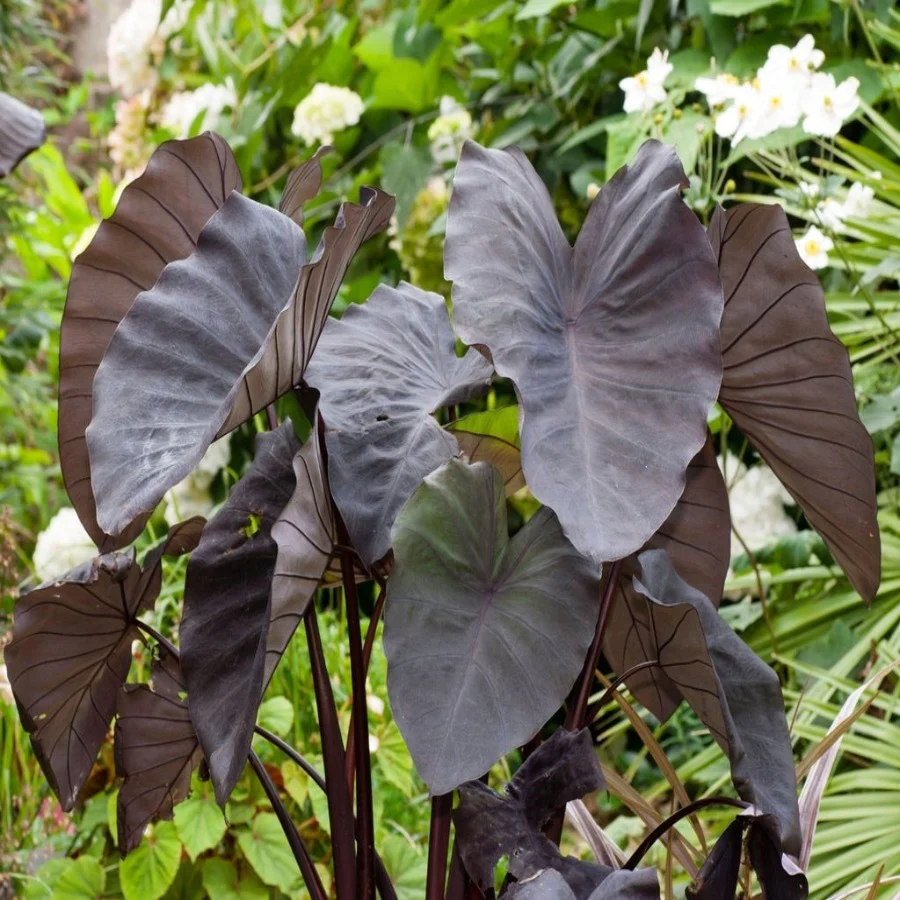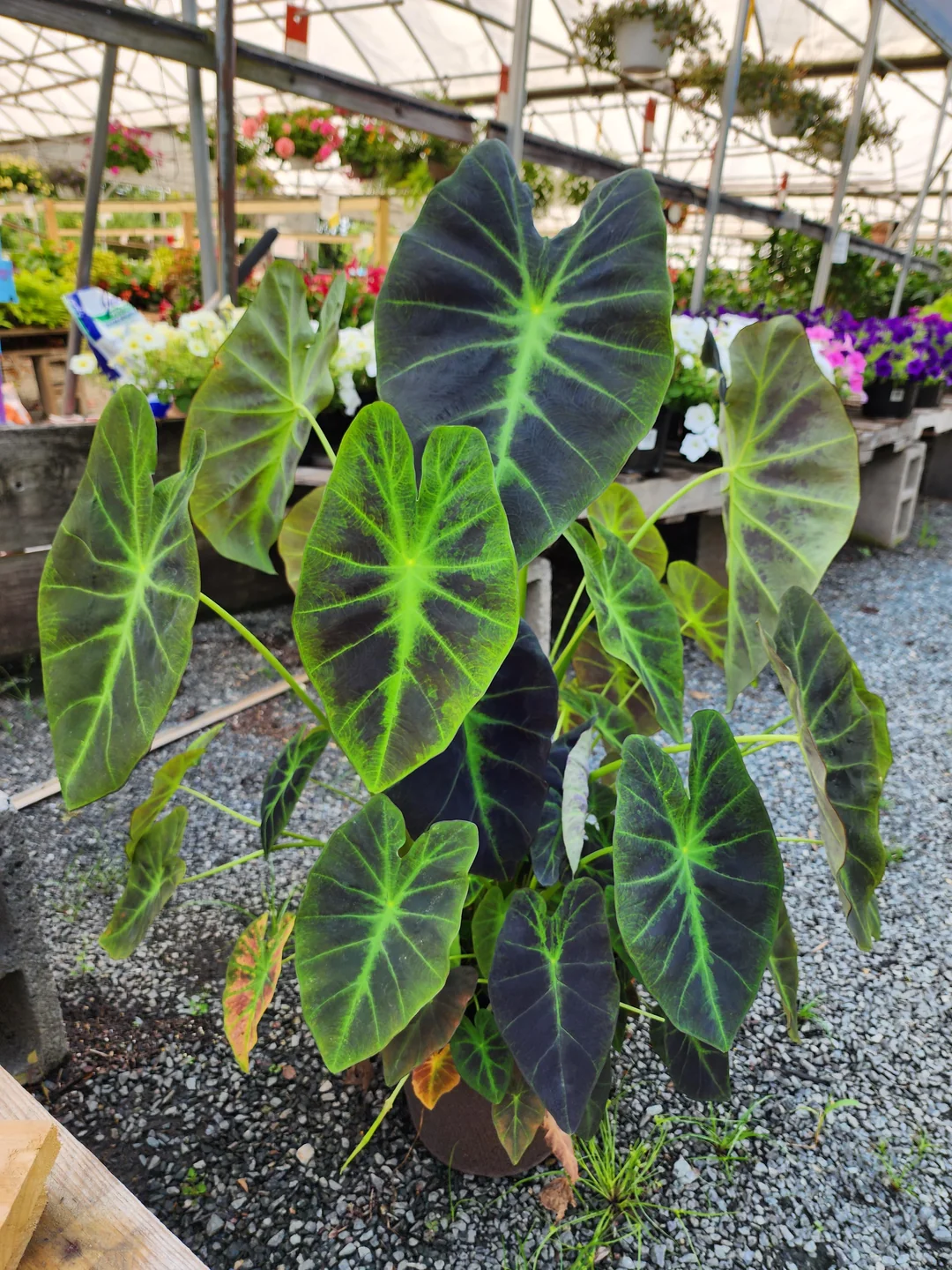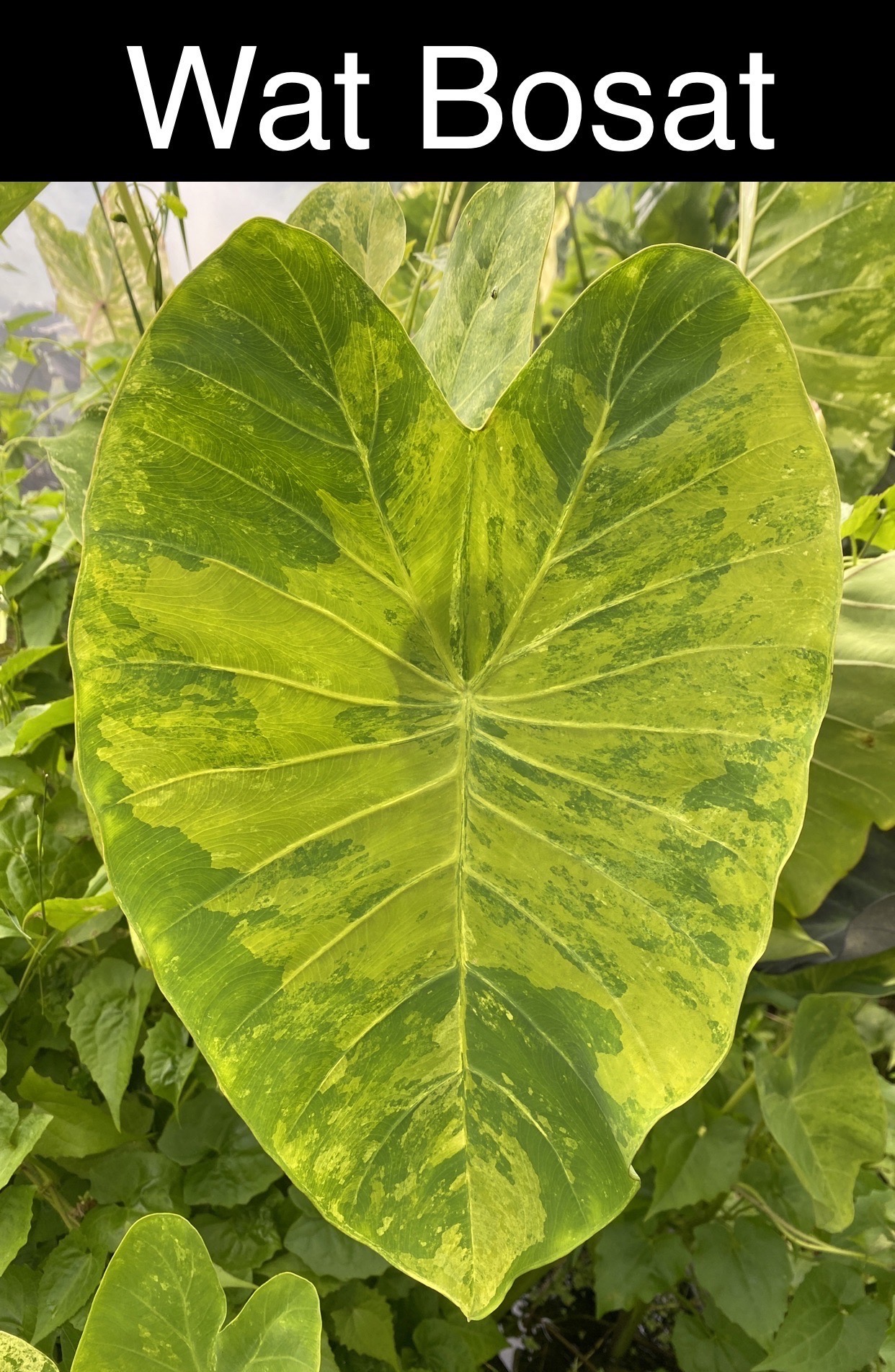Colocasia, commonly known as elephant ears or taro, are a striking addition to any garden. These tropical plants, with their large, heart-shaped leaves, create a dramatic and textural focal point, adding a touch of the exotic to your landscape. Whether you’re a seasoned gardener or a beginner, growing colocasia is surprisingly easy. With a little knowledge and the right conditions, you can enjoy these vibrant plants year after year.

Understanding Colocasia
Before we delve into the steps of growing colocasia, it’s important to understand the basics. These plants belong to the Araceae family and are native to tropical regions of Southeast Asia and the Pacific Islands. Their large leaves, which can reach up to several feet in diameter, are their most striking feature. Colocasia are also known for their edible corms, the starchy underground tubers that form the basis of many traditional cuisines.
Colocasia is also a nutritional powerhouse, boasting rich amounts of carbohydrates, fiber, vitamins and minerals that contribute to a balanced diet and overall health.
Choosing the Right Colocasia
With over 20 species and countless cultivars, there’s a colocasia out there for every gardener. Here’s a quick guide to help you choose the right one:
‘Black Magic’
This variety produces deep, almost black leaves with velvety, dark veins. It’s an excellent choice for adding drama and contrast to any garden.

‘Illustris’
With its large, silvery-green leaves with dark green veins, this cultivar offers a unique and striking appearance.

Site Selection
The first step in successfully growing colocasia is choosing the right location. These tropical plants thrive in warm, humid environments, so it’s essential to select a site that mimics their natural habitat.
Sunlight Requirements
Colocasia prefer partial shade to full sun, depending on the cultivar. Most varieties do well in a spot that receives 4-6 hours of direct sunlight per day, with dappled shade or afternoon shade to protect the leaves from the intense midday sun.
Soil Conditions
Colocasia grow best in rich, well-draining soil with a slightly acidic to neutral pH (6.0-7.0). Amend your soil with compost or well-rotted manure to improve drainage and provide the necessary nutrients.
Moisture and Humidity
These plants love moisture and humidity. Aim to keep the soil consistently moist, but not waterlogged. In hot, dry climates, consider misting the leaves regularly to maintain high humidity levels.
| Soil Condition | Ideal |
|---|---|
| Texture | Rich, well-draining |
| pH | 6.0 – 7.0 |
| Organic Matter | High |
- Provide at least 4-6 hours of direct sunlight per day
- Maintain consistently moist, but not waterlogged, soil
- Increase humidity by misting leaves regularly
Planting and Propagation
Colocasia can be grown from corms, offsets, or seeds, each with its own advantages and considerations.
Planting Corms
Corms are the most common method of propagating colocasia. Choose large, healthy corms and plant them 6-8 inches deep and 18-24 inches apart. Water the soil thoroughly after planting and keep it consistently moist as the plants begin to emerge.
Propagating with Offsets
Offsets, or baby plants that form around the base of the mother plant, can also be used to propagate colocasia. Carefully dig up the offsets and replant them in their desired location, following the same planting depth and spacing as for corms.
Starting from Seed
While less common, colocasia can also be grown from seed. Sow the seeds indoors 8-10 weeks before the last expected frost date, then transplant the seedlings outdoors once they have developed several leaves and the weather has warmed.
| Propagation Method | Planting Depth | Spacing |
|---|---|---|
| Corms | 6-8 inches | 18-24 inches |
| Offsets | 6-8 inches | 18-24 inches |
| Seeds | Sow indoors, then transplant | 18-24 inches |
- Plant corms or offsets 6-8 inches deep and 18-24 inches apart
- Start seeds indoors 8-10 weeks before the last frost, then transplant
- Keep soil consistently moist during establishment
Care and Maintenance
Proper care and maintenance are essential for healthy, vigorous colocasia plants. From watering and fertilizing to overwintering, here’s what you need to know.
Watering
Colocasia are thirsty plants and require consistent moisture. Water the soil when the top inch or two becomes dry, taking care not to let the soil become completely saturated. In hot, dry weather, you may need to water more frequently.
Fertilizing
Feed your colocasia plants with a balanced, slow-release fertilizer or compost-based fertilizer. Apply the fertilizer in early spring and again in mid-summer to ensure the plants have the necessary nutrients for optimal growth.
Mulching
Applying a 2-3 inch layer of organic mulch, such as wood chips or shredded leaves, can help retain soil moisture and suppress weed growth around your colocasia plants.
Overwintering
In cooler climates, colocasia are often grown as annuals, as they can’t tolerate frost or freezing temperatures. To overwinter the plants, cut back the foliage after the first frost and dig up the corms. Allow them to dry in the sun for a few hours, then store them in a cool, dry place, such as a basement or garage, until spring.
| Care Task | Frequency |
|---|---|
| Watering | When top 1-2 inches of soil are dry |
| Fertilizing | Early spring and mid-summer |
| Mulching | Apply 2-3 inch layer of organic mulch |
| Overwintering | Dig up corms after first frost, store in cool, dry place |
- Water consistently, keeping soil moist but not waterlogged
- Fertilize with a balanced, slow-release or compost-based fertilizer
- Apply a 2-3 inch layer of organic mulch to retain soil moisture
- Overwinter corms in a cool, dry place until spring
Troubleshooting and Common Issues
Even with the best care, colocasia plants can sometimes face challenges. Here are some common issues and how to address them.
Leaf Discoloration
If the leaves start to turn yellow or brown, it could be a sign of too much or too little water, nutrient deficiencies, or pest infestations. Adjust your watering schedule and check the soil pH and nutrient levels.
Pests
Colocasia can be susceptible to aphids, spider mites, and other common garden pests. Keep an eye out for signs of infestation and use organic pest control methods, such as insecticidal soap or neem oil, if needed.
Diseases
Fungal diseases like leaf blight and root rot can affect colocasia plants, especially in humid conditions or poorly drained soil. Improve air circulation and ensure proper drainage to prevent these issues.
Damage from Cold Temperatures
If your colocasia plants are exposed to frost or freezing temperatures, the leaves and stems may die back. In this case, follow the overwintering instructions to protect the corms and allow the plants to regrow in the spring.
| Issue | Possible Causes | Solutions |
|---|---|---|
| Leaf Discoloration | – Overwatering or underwatering – Nutrient deficiencies – Pest infestations | – Adjust watering schedule – Test soil pH and fertility, amend as needed – Use organic pest control methods |
| Pests | – Aphids – Spider mites | – Apply insecticidal soap or neem oil |
| Diseases | – Leaf blight – Root rot | – Improve air circulation – Ensure proper drainage |
| Cold Damage | – Frost or freezing temperatures | – Overwinter corms in a cool, dry place |
- Monitor plants for signs of distress and address issues promptly
- Use organic, non-toxic solutions for pest and disease management
- Protect plants from cold temperatures by overwintering corms
Conclusion
Growing colocasia, or elephant ears, is a rewarding and relatively easy endeavor for gardeners of all skill levels. By understanding the plant’s needs, selecting the right cultivar, and providing the appropriate growing conditions, you can enjoy these striking tropical plants in your garden year after year. With the right care and attention, your colocasia will thrive, adding a touch of the exotic to your outdoor space.
FAQs
- What are the ideal growing conditions for Colocasia?
Colocasia thrives in warm, humid climates with full sun to partial shade. They prefer well-draining soil that is rich in organic matter and consistently moist but not waterlogged.
- How do I plant Colocasia?
Plant Colocasia corms or tubers in spring after the last frost. Dig a hole twice the size of the corm, place it with the growing point facing up, and cover it with soil. Water thoroughly.
- How often should I water Colocasia?
Colocasia loves water and should be watered regularly, especially during hot, dry periods. Keep the soil consistently moist but not soggy. Mulching around the plants can help retain moisture.
- What are common pests and diseases affecting Colocasia?
Colocasia can be susceptible to pests like aphids, spider mites, and caterpillars. Diseases like root rot and leaf blight can also occur. Regular inspection and prompt treatment are essential to keep your plants healthy.
- How do I overwinter Colocasia in colder climates?
In areas with freezing temperatures, Colocasia needs to be overwintered indoors. Dig up the corms or tubers before the first frost, allow them to dry, and store them in a cool, dry place until spring.



1 thought on “How to Grow Colocasia in 5 Easy Steps”